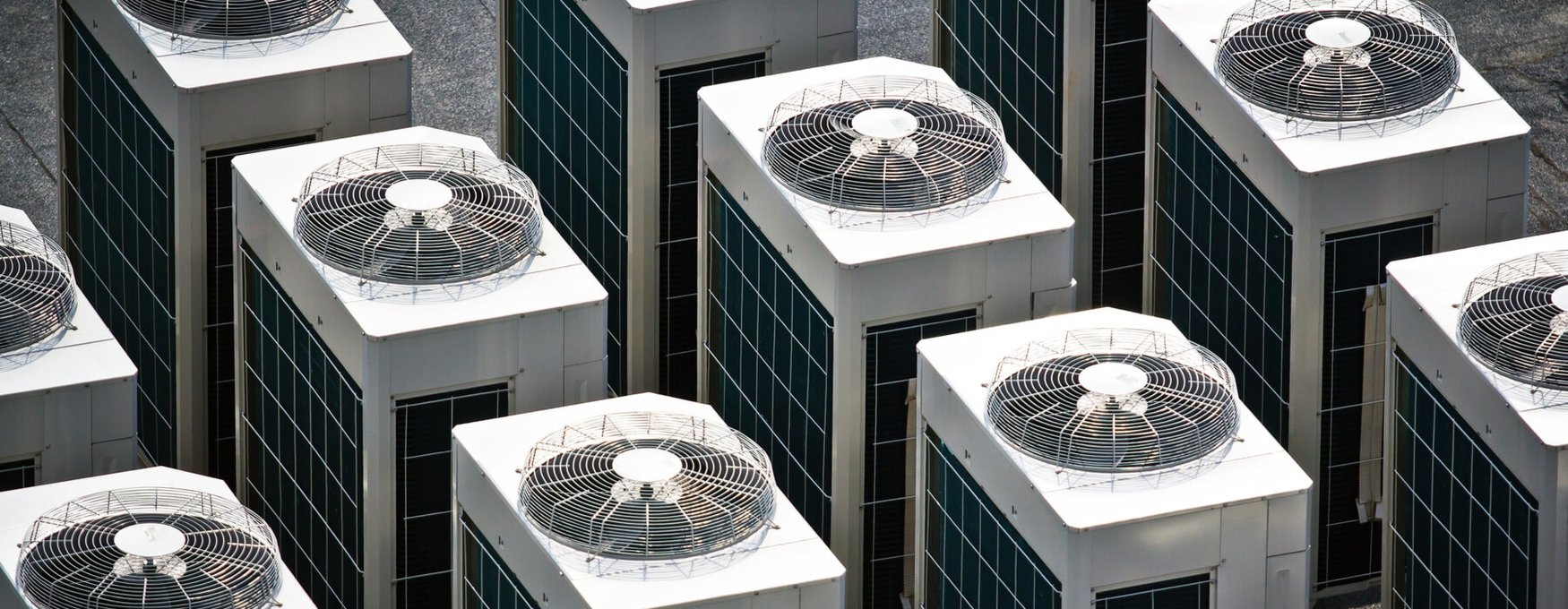How to Identify Energy-Efficient Air Conditioners

Energy-efficient air conditioners can significantly reduce energy consumption and costs while contributing to a more sustainable future. However, choosing the best unit for your needs often requires a technical understanding of key efficiency metrics. This guide will walk you through essential rating systems like CEER, SEER, EER, IEER, and COP to help you make an informed decision.
Understanding Energy Efficiency Ratings for Air Conditioners
Choosing an energy-efficient air conditioner involves evaluating its performance using various metrics. These ratings provide insights into how efficiently the system operates under different conditions. Here’s a breakdown of the most important factors:
CEER (Combined Energy Efficiency Ratio)
The CEER measures the efficiency of room air conditioners, accounting for both operating and standby power usage. Unlike older metrics, CEER provides a more realistic representation of energy consumption.
How it's calculated:
CEER = Cooling Capacity (BTU/hour) ÷ Total Power Input (Watts, including standby power).
A higher CEER rating indicates a more energy-efficient unit, helping you lower electricity bills while maintaining comfort.
SEER (Seasonal Energy Efficiency Ratio)
The SEER rating evaluates the seasonal efficiency of central air conditioning systems, measuring how effectively the unit cools over an entire cooling season.
How it's calculated:
SEER = Total Cooling Output Over a Cooling Season (BTU) ÷ Total Energy Input (Watt-hours).
Higher SEER ratings (e.g., 15 or above) indicate better performance and energy savings. SEER is essential when comparing CEER vs SEER, as CEER focuses on room units while SEER evaluates whole-house systems.
IEER (Integrated Energy Efficiency Ratio)
How it's calculated:
It averages cooling efficiency at four weighted load points (100%, 75%, 50%, and 25%), providing a more comprehensive efficiency assessment.
This metric is ideal for property managers and contractors overseeing commercial HVAC installations.
EER (Energy Efficiency Ratio)
The EER represents efficiency at a constant operating condition, typically at 95°F. While less comprehensive than SEER and IEER, it provides valuable insight into peak performance.
How it's calculated:
EER = Cooling Capacity (BTU/hour) ÷ Power Input (Watts).
A higher EER means better energy efficiency during periods of high demand, making it crucial for climates with extreme heat.
COP (Coefficient of Performance)
The COP measures the efficiency of heating and cooling systems by comparing the amount of useful heating or cooling output with the energy required to accomplish it.
How it's calculated:
COP = Useful Heating or Cooling Provided (Watts) ÷ Energy Input (Watts).
A higher COP indicates greater efficiency, making this metric particularly relevant for heat pumps.
Get an energy-efficient HVAC design for your next construction project.
CEER vs SEER – Key Differences
| Aspect | CEER | SEER |
|---|---|---|
| Energy Efficiency Measurement | Assesses the efficiency of window air conditioners by considering both cooling performance and standby power consumption, providing a more comprehensive efficiency metric. | Measures the cooling efficiency of an air conditioner over an entire cooling season, accounting for variations in temperature and humidity. |
| Common Usage | Specifically applied to window-type air conditioners, including those with heating capabilities. | Predominantly used for central air conditioning systems and air-source heat pumps. |
| Calculation | Determined by dividing the total cooling output (in BTUs) by the total energy input (in watt-hours), which includes both active cooling and standby power consumption. | Calculated by dividing the total cooling output (in BTUs) during a typical cooling season by the total energy input (in watt-hours) during the same period. |
| Efficiency Indication | A higher CEER value signifies better overall energy efficiency, considering both active and standby power usage. | Higher SEER ratings indicate greater energy efficiency, leading to reduced operating costs over the cooling season. |
Minimum ENERGY STAR Efficiency Requirements for Air Conditioners
The ENERGY STAR program has several technical requirements for HVAC equipment, which include a minimum efficiency rating. There is an extensive list of requirements for air conditioner manufacturers who want to get the label. The following table summarizes the efficiency requirements:
| Equipment Type | ENERGY STAR Efficiency Requirements |
|---|---|
| Window air conditioners | 9.9 - 12.1 CEER, depending on specifications |
| Central air conditioners | 15 SEER for all units below 65,000 BTU/hour |
| Air-source heat pumps | 15 SEER for all units below 65,000 BTU/hour |
| Central air conditioners with no heating system (cooling only) | 11.8 IEER for units 65,000 BTU/hour or larger |
| Central air conditioners with resistance heater | 11.8 IEER for units 65,000 BTU/hour or larger |
| Central air conditioners with other types of heating | 11.6 IEER for units 65,000 BTU/hour or larger |
| Air-source heat pumps | 11.4 IEER for units 65,000 BTU/hour or larger 11 IEER for units 135,000 BTU/hour or larger |
| Geothermal heat pumps | 3.1 - 4.1 COP, depending on system configuration 16.0 - 21.1 EER, depending on system configuration |
If you’re considering an air conditioner upgrade, the best recommendation is looking for an ENERGY STAR unit with the highest possible nameplate efficiency. Just keep in mind that efficiency metrics used change depending on the type of AC equipment.
According to market research the global energy efficient air conditioner market, valued at $164.8 billion in 2023, is projected to grow to $256.2 billion by 2031.
Choosing the Right Energy-Efficient Air Conditioner
When deciding on an energy-efficient air conditioner, consider the following guidelines:
- Understand Your Needs:
Determine whether you need a room unit (evaluated by CEER) or a whole-system solution (evaluated by SEER or IEER). - Look for ENERGY STAR Certification:
ENERGY STAR-certified units meet strict efficiency standards, ensuring excellent performance with minimal environmental impact. - Optimize for Your Climate:
Choose units with high EER ratings for areas with extreme heat or prioritize SEER ratings in milder, seasonal climates. - Check Manufacturer Data:
Review technical specifications from reputable manufacturers to compare CEER vs SEER, IEER, and other relevant ratings.
Energy-Efficient Home Upgrade Credit
If you install eligible energy-efficient upgrades in your home after January 1, 2023, you could qualify for a tax credit of up to $3,200. This credit applies to improvements made through 2032.
Conclusion
Selecting energy-efficient air conditioners doesn’t have to be overwhelming. At NY Engineers, we specialize in designing HVAC solutions that prioritize efficiency, comfort, and long-term savings. Whether you’re managing a residential, commercial, or construction project, our team provides tailored advice and system designs to meet your exact needs.
For professional assistance with energy-efficient HVAC systems, contact us at info@ny-engineers.com or give us a call at (786) 788-0295. Together, we’ll create a cost-effective and sustainable environment.
FAQ's
- How does IEER differ from SEER?
SEER (Seasonal Energy Efficiency Ratio) is designed for residential use, considering fluctuating loads, while IEER (Integrated Energy Efficiency Ratio) is for commercial settings with consistent loads. IEER measures efficiency at multiple load capacities (25%, 50%, 75%, 100%) for a more accurate assessment of commercial unit performance. - What is a good CEER rating?
A good CEER (Combined Energy Efficiency Ratio) rating is 12 or higher, which is required for an Energy Star certification. The most energy-efficient window units have CEER ratings of 15 or above. - What is the significance of the "cooling season" in the SEER calculation?
The "cooling season" in SEER calculations refers to a standardized time period and average temperature range that replicates real-world conditions. It ensures a consistent testing standard, allowing for fair comparisons of SEER ratings across different air conditioner models. - What does "energy-efficient" mean when talking about air conditioners?
An "energy-efficient" air conditioner uses less electricity to achieve the same cooling effect as a less efficient model, resulting in lower energy bills and a smaller environmental impact. - Is the size of an AC unit related to its energy efficiency?
Yes, the size of an AC unit is related to its energy efficiency. An undersized unit works harder, consuming more energy, while an oversized unit cycles frequently, wasting energy and causing temperature fluctuations. A professional HVAC contractor can help determine the correct size through a load calculation.

Michael Tobias
Michael Tobias, the Founding Principal of NY Engineers, currently leads a team of 50+ MEP/FP engineers and has led over 1,000 projects in the US
Join 15,000+ Fellow Architects and Contractors
Get expert engineering tips straight to your inbox. Subscribe to the NY Engineers Blog below.



